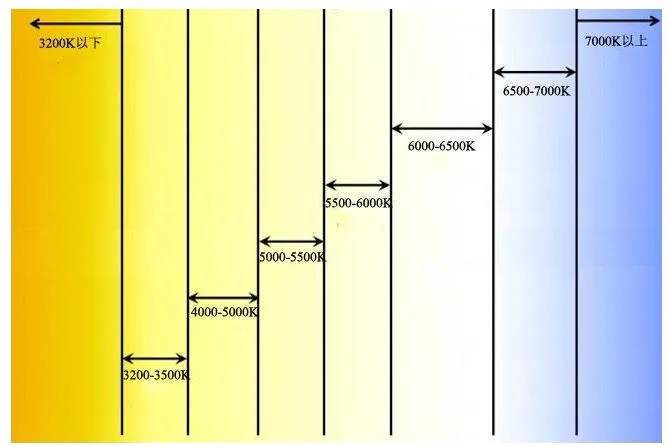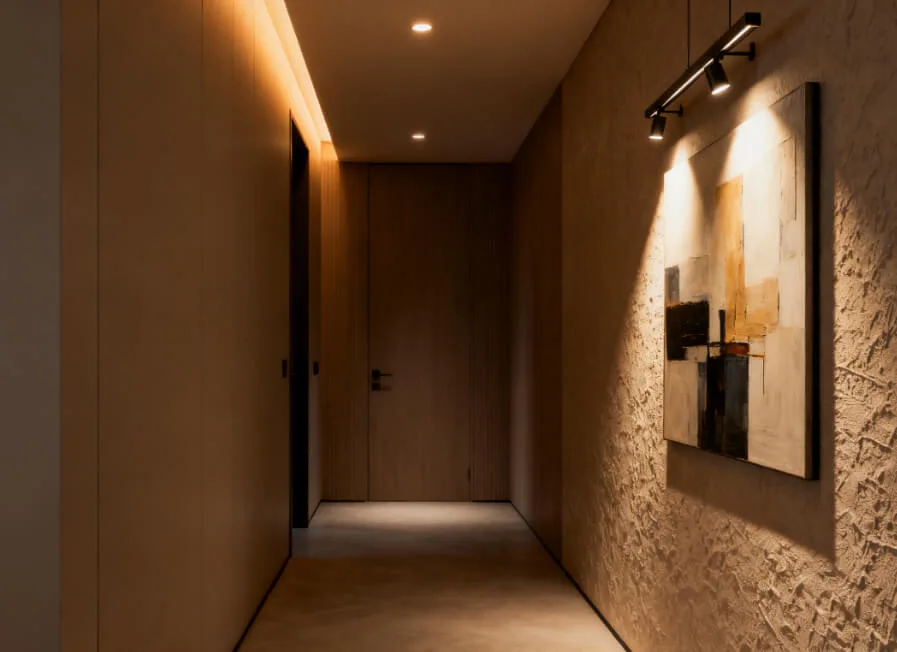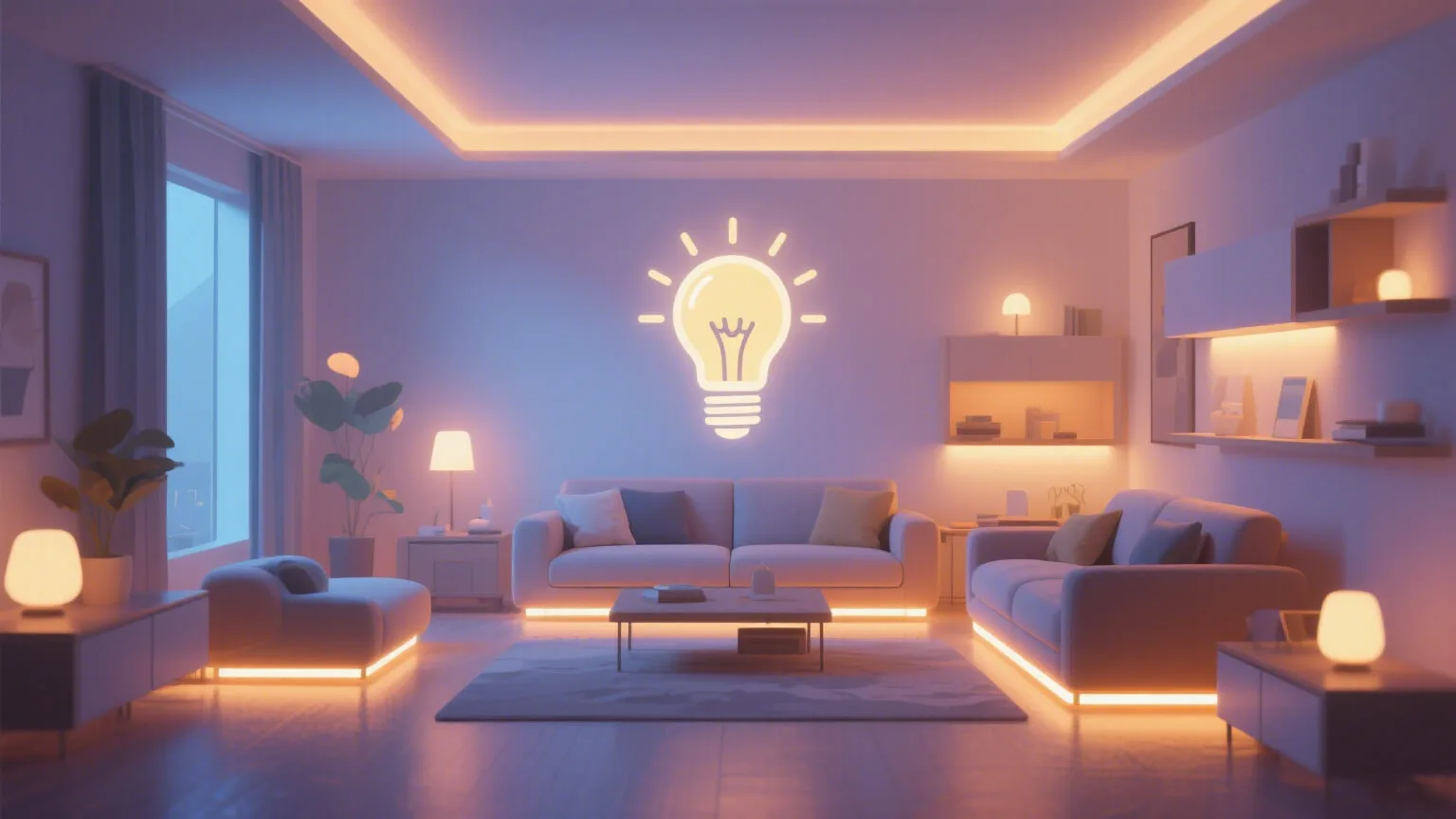Understanding Color Temperature
Color temperature is a critical concept in the fields of lighting and photography, affecting how we perceive colors and the overall mood of an environment. Measured in degrees Kelvin (K), the color temperature scale ranges from very cool tones to warm tones, influencing visual experiences. Lower Kelvin values, typically between 1000K and 3000K, present warm, yellowish hues, whereas higher temperatures, such as 4000K to 5000K and above, convey cooler, bluish tones. This range not only helps in defining the aesthetic of a space but also plays a pivotal role in photography, where the right color temperature can dramatically alter the look of an image.
Understanding the implications of color temperature is vital for designers and photographers alike. In residential settings, warm light (around 2700K to 3000K) is often preferred for creating a cozy and inviting atmosphere, ideal for living rooms or bedrooms. Conversely, cooler temperatures, such as 4000K, might be suitable for work environments, promoting productivity and alertness. The choice of color temperature can influence emotions and behaviors, shaping the way people interact with their spaces.
In photography, achieving the desired color temperature is essential for capturing accurate representations of subjects. Different lighting conditions, such as sunlight (around 5000K to 6500K) versus incandescent bulbs (around 2700K), require adjustments in camera settings to preserve the authenticity of color. Thus, knowledge of color temperature equips photographers with the ability to manipulate mood and narrative through visual aesthetics.
In conclusion, understanding color temperature is fundamental in various applications, from home design to photography. By grasping how different temperatures affect color appearance, one can leverage this knowledge to enhance the visual ambiance of any space or image.
The Kelvin Scale and Its Application
The Kelvin scale is a fundamental measure of temperature that is crucial in defining the color characteristics of light sources. Unlike the Celsius and Fahrenheit scales, which are based on the freezing and boiling points of water, the Kelvin scale starts at absolute zero, the point at which all thermal motion ceases. This unique feature makes it particularly applicable in the field of color temperature, where light is assigned a specific Kelvin value to indicate its hue and warmth. The Kelvin scale ranges from 1,000K to over 10,000K, with lower values corresponding to warmer, amber tones, and higher values indicating cooler, blue tones.
Common applications of the Kelvin scale can be observed in various lighting scenarios. For instance, candlelight typically measures around 1,500K, providing a warm and inviting glow. As the day progresses, natural sunlight at sunrise and sunset is usually annotated around 2,000K—this warmth is often desired in design settings to create comfortable atmospheres. Standard household bulbs, found in many homes, emit light at approximately 2,700K to 3,000K, striking a balance between warmth and functionality.
As we approach cooler lighting options, we enter the daylight range, where temperatures reach between 5,000K and 6,500K. Daylight is often perceived as neutral and is commonly used in photography and interior design to create crisp, lifelike images. When selecting light fixtures, photographers should consider the color temperature to enhance their images effectively. Similarly, interior designers must choose the appropriate Kelvin value to ensure the desired ambiance is achieved within a space. Understanding the Kelvin scale allows one to tailor lighting to accentuate features and meet the specific needs of both functional and aesthetic applications.
Impact of Color Temperature on Mood and Perception
Color temperature plays a significant role in influencing human emotions and perceptions. It is measured in Kelvin (K), with lower values indicating warmer tones and higher values representing cooler tones. Warm light, typically ranging from 3000K to 4000K, promotes a sense of coziness and invites relaxation. These lower color temperatures are ideal for creating comforting atmospheres, making them popular choices for residential spaces and hospitality settings. Decor that incorporates warm color temperatures fosters intimacy and encourages social interaction, making it perfect for living rooms, bedrooms, and restaurants.
On the other hand, cooler color temperatures, such as 5000K and above, can impact mood by enhancing alertness and concentration. These cooler tones are perceived as crisp and clear, significantly benefiting work environments and retail spaces. For example, an office equipped with lighting at 5000K can lead to increased productivity and focus among employees, while retail environments featuring cooler lighting can draw attention to products and stimulate customer engagement. The psychological associations attached to light color temperature highlight its effect on motivation and energy levels.
Understanding the impact of color temperature allows individuals and businesses to make informed decisions about interior design and lighting choices. For effective implementation, it is essential to consider the purpose of the space and the desired emotional response. A welcoming home office may benefit from a mix of warm and cool tones to maintain comfort while supporting productivity, while a dining area might opt for warmer lights to inspire connection and relaxation. Thus, by leveraging the nuances of color temperature, one can create environments that enhance well-being and influence behavior positively.
Choosing the Right Color Temperature for Your Needs
Selecting the appropriate color temperature for your lighting needs can significantly enhance the functionality and aesthetic appeal of a space. Color temperature is measured in Kelvin (K), and understanding its nuances can guide you in creating an environment that suits different activities and design styles. When assessing a space, begin by considering its purpose. For instance, residential areas such as living rooms and bedrooms benefit from warmer color temperatures, typically around 3000K, which emit a cozy and inviting ambiance. In contrast, areas intended for work or focused tasks, like kitchens or offices, may require cooler temperatures, ranging from 4000K to 5000K, to promote alertness and concentration.
Additionally, the design style of a room can inform your choice of lighting. Modern designs often embrace cooler temperatures around 5000K, which can highlight sleek lines and create a contemporary feel. Alternatively, rustic or traditional spaces may align better with inviting warms of 3000K, enhancing their charm and comfort. Furthermore, the time of day plays a crucial role in selecting the right color temperature. During daylight hours, cooler lights can mimic natural daylight and boost productivity, while in the evening, switching to warmer lights can promote relaxation and winding down.
When shopping for lighting fixtures, it is essential to look for products that clearly indicate their color temperature. For general use, adjustable fixtures that allow you to change between 3000K, 4000K, and 5000K can provide flexibility depending on the time of day or task at hand. Consider LED options, which offer a range of color temperatures and have the added benefits of energy efficiency and longevity. By taking these various factors into account, you can create thoughtfully lit spaces that cater to your specific needs and preferences.




